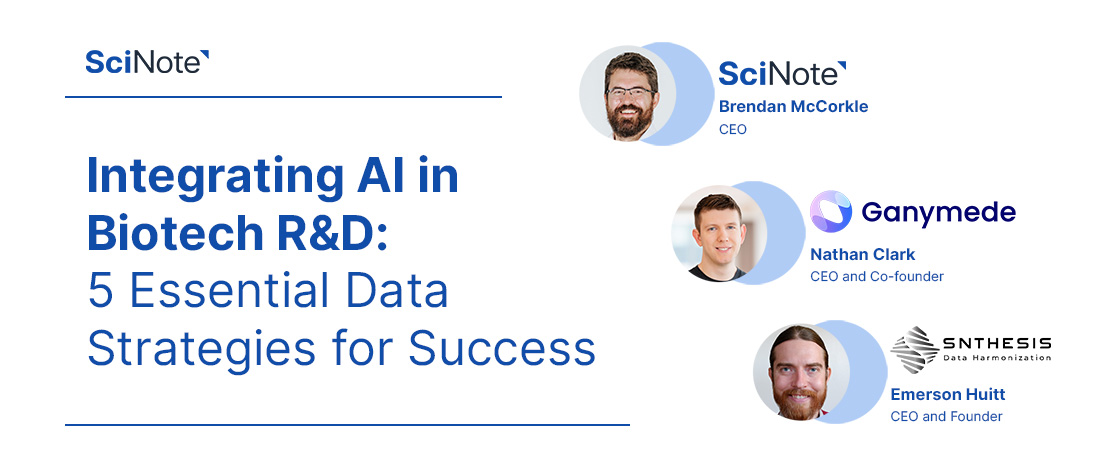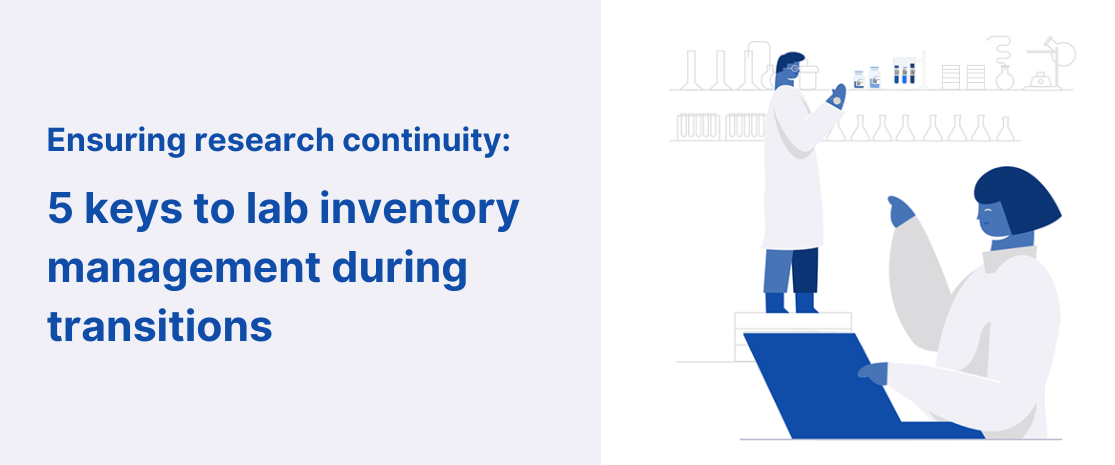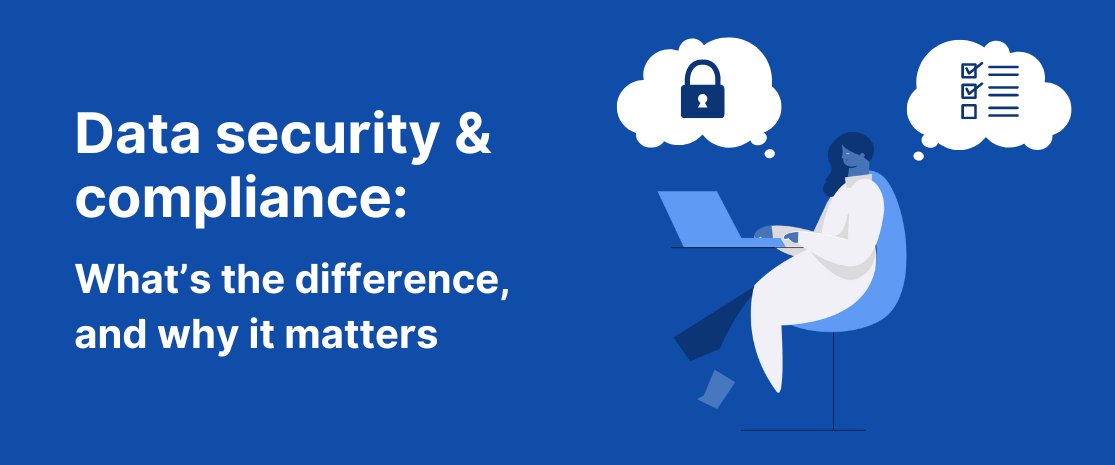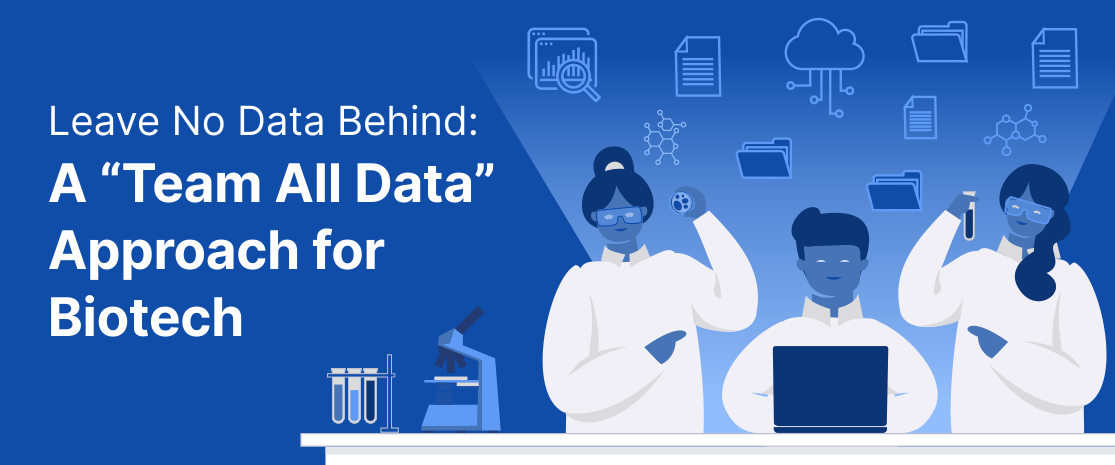Integrating AI in biotech R&D: 5 essential data strategies for success
In the world of biotech, staying competitive increasingly means integrating Artificial Intelligence (AI) into your operations. The journey toward leveraging AI in Biotech effectively begins with a solid foundation built upon comprehensive data collection, well-defined data models, and a culture that embraces data and AI innovation. Each facet contributes to the roadmap toward AI integration in biotech R&D.
In this blog post, we outline key strategies curated from a recent webinar “Unleashing the Power of AI in Biotech: 5 Actionable Insights” with CEOs from SciNote, Ganymede, and Snthesis. From championing comprehensive data collection to cultivating a data-driven culture and prioritizing data readiness – laboratories and biotech firms can adopt these key steps not only to enhance their data capabilities, but also pave the way for future success in AI integration.
“AI is not going to put you out of business, but the company that’s using AI will go faster than you are and will certainly have a market advantage over you.”
Emerson Huitt, CEO and Founder, Snthesis
Five essential strategies for success
- Champion comprehensive data collection – Be on Team “Get All the Data”
- Write down your data model
- Create a data-driven culture
- Invest in data readiness and governance
- Leverage existing tools for efficiency
1. Champion comprehensive data collection – be on Team “Get All the Data
“Every [piece of data] that’s not stitched into the picture, every machine that’s not connected, every note that doesn’t make it into the data set for the AI consumption, will lower the quality of that analysis.”
Brendan McCorkle, CEO of SciNote
In biotech, every uncollected data point is a missed opportunity. To be on team “Get All the Data,” lab managers should focus on integrating every possible data source – from human-generated data, system analysis, to machine outputs – into their data management systems. This approach will enrich the data pool for AI analysis and ensure that the quality of analysis remains high. Here are some actionable tips:
- Regularly audit your data collection processes to identify any gaps or disconnected sources.
- Encourage your team to think creatively about new data types that could enhance your AI projects.
- Automate data capture whenever possible.
2. Write down your AI data model
“The most important thing you can do is to know what you’re capturing and why it matters. So taking the time to write down the data model and what data is validated and how that data needs to be validated is something that’s mission critical.”
Emerson Huitt, CEO and Founder, Snthesis
Understanding and writing down your data model – the data elements and their connections – is crucial for the future integration of AI. It ensures that you have clarity when it comes to the structure, relationship, and attributes of your data, and allows efficient adoption of AI applications when you integrate AI into your workflow. It will also eliminate unnecessary miscommunication or misinterpretation when you revisit the data model in the future. Here are some actionable tips:
- Have a centralized location where you develop and document your data model
- Schedule periodic reviews of your data model with your team to ensure it remains relevant and comprehensive.
3. Create a data-driven culture with AI in biotech
“Capturing structured data, applying best practices of having a good electronic lab notebook, a data strategy around that, being able to do some basic statistics, and then getting up to AI…I think every step of the way is both a tooling organization thing but also a data literacy thing for the scientists.”
Nathan Clark, CEO and Co-founder of Ganymede
A data-driven organization culture is crucial for successful AI integration in biotech. Scientists need to grasp data intricacies to evaluate AI accurately, especially in smaller tasks. Understanding data helps them discern when AI autonomously generates information or provides search results. Moreover, scientists must not just possess new tools but also comprehend how to utilize them effectively within their workflow. This proficiency ensures faster progress while minimizing errors due to mishandling or misjudging the AI’s output. Here are some actionable tips:
Actionable Tips:
- Encourage ongoing conversations about data and AI.
- Conduct workshops and training sessions to enhance your team’s data literacy, focusing on how AI can be used as a tool within their existing workflow.
4. Invest in data readiness and establish data governance
“And there’s been a lot of great points made which I think sketch out the fact that data readiness to us is really an organization wide thing that has to be something that the whole business has to be invested in at that level.”
Nathan Clark, CEO and Co-founder of Ganymede
Data readiness is a holistic organizational effort that demands full business involvement. This involves establishing the right personnel for data governance, structuring data models, and frameworks. Emphasizing smaller projects aids in swiftly delivering incremental value without the burden of perfecting an extensive model upfront. Additionally, the cultural aspect is vital; fostering a culture of accountability and creative evolution of data models is often overlooked but crucial for sustained progress. This entails viewing data models as evolving entities rather than rigid structures. Here is an actionable tip:
- Assign roles for data governance within your team and encourage a culture where a data model is seen as a dynamic asset that evolves over time.
5. Leverage existing AI tools for efficiency
“So look at what’s available off the shelf and look at your processes and think of AI as a force multiplier that will allow your scientists to do more science rather than think you know that as I’m going to build a model today.”
Emerson Huitt, CEO and Founder, Snthesis
Especially for small biotech companies, consider exploring off-the-shelf solutions to streamline data utilization and boost research capabilities. These tools can provide insights into new research areas without significant initial investment.
Another thing to consider is the improvements in outputs after the initial investment in data collection, preparation, and management.
“[It] is important to think about any workflow change or system improvement is the sort of investment in structure versus output…this math works when if you’re taking say 2 hours to spend on preparing the data for ingestion by the data science team and this is actually saving you more than two hours in your workflow.”
Brendan McCorkle, CEO of SciNote
Here are some actionable tips:
- Stay informed about the latest AI tools and public datasets relevant to your research area.
- Use these resources to augment your data and gain preliminary insights.
The journey toward AI and innovation
Remember, AI in biotech R&D is a journey, with incremental steps that begin with data collection and culminate in sophisticated applications. By embracing these actionable insights, you’re not just adopting new technology; you’re paving the way for more innovative, efficient, and successful research outcomes.




